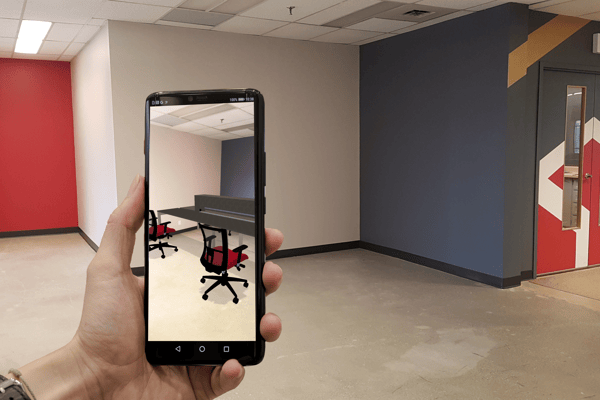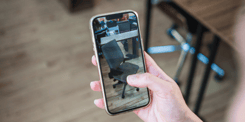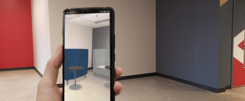By now, it’s safe to assume that the average person has heard of Virtual reality or VR. It is a part of modern society and is disrupting many industries including gaming, education, and remote work. Not to mention its impact on pop culture with many books, movies, and television shows exploring the impact of VR on social norms, how we connect and communicate, and more.
However, it’s not as safe to assume that everyone has heard of augmented reality or AR, VR’s close cousin. Companies have been experimenting with AR for several years but it has only in recent years become more popular and widely used. If you find yourself wondering what exactly the difference between these two technologies are and are curious about how they are being used today to help market and facilitate business, you are in the right place
The Differences Between AR and VR
First, we should probably define and break down exactly what these technologies are.
VR is the experience of viewing an entirely virtual world through a device such as a VR headset or even through a phone. As you move your head, sensors in a head-mounted device will track your movements and change your view inside the virtual world to match you as you move. This gives the illusion the user is inside the virtual world. For example, you could be seeing a first-person view of walking on the beach in the Bahamas while in reality, you’re wearing a headset in your living room. Virtual reality’s main goal is immersion and creating one-to-one movements with the user.

Augmented reality has some similarities to VR but has a very different outcome. AR gives users the ability to view what virtual objects can look like in the real world by overlaying a digital item in a live environment. The best examples of AR can be found on a smartphone these days. A user can use a camera-based application to scan their surroundings and then drop in a virtual object. That virtual object can vary widely from products to animated characters, and more. These virtual objects have dimensions, and you can walk around and view them from all angles in the real world and get accurate ideas of how big that object could be in real life.

So how does AR work? AR requires a device with three main things:
- A sensor that can capture and record data based on your physical surroundings. This information is usually captured just through a camera. But other sensors such as phones gyroscope could be used as well.
- Processing power to render a virtual object and place it within the analyzed space and track it accurately using the sensors available.
- A screen/display to see both the images recorded from the real world and where the virtual objects have been placed within it.
Both technologies at first were limited to novelty uses or used in private research, not fully accessible by consumers or the everyday person. However, thanks to the technological advances of the past decade, especially the rise of the smartphone, both of these technologies have become much more accessible to everyone.
VR and AR Today
Today, VR and AR are tools that companies in multiple industries are taking advantage of to create memorable experiences for their customers. Using AR, they can help inform them and persuade them to use their goods/services.
In the case of VR, companies are often using it to create experiences that educate and entertain those who use them. For example, tourism can use VR to give someone the feeling of exploring a famous landmark from the first-person point of view. A mechanics company could give them access to view a piece of machinery from the inside to get a better idea of how exactly it works. Schools could use VR to provide an auditory/visual experience to young minds such as swimming with dolphins or exploring ancient ruins, too far to visit in the real world.
AR on the other hand has a large presence in a lot of online retail experiences. Online retailers may offer the chance for a customer to view what a product could be like in their own home. BMW was one of the first to do this with AR to view a car model from multiple angles through a webcam. By 2022, many retailers have added AR experience to their digital storefronts, from clothes manufacturers to tech companies, and most related to our work here at Yulio: furniture.
This Yulio project contains a great example of AR. Explore and check it our for yourself.
At Yulio we recognized the impact that both AR and VR can have in the business world and we saw how these tools could support those who work in the furniture, architecture, and design worlds to bring their ideas to life in a way that would create memorable presentations for their prospects and clients. We offer VR tools that bring designs to life and allow you to explore and share them in a brand new way. And we’ve worked with our partners to create AR experiences to show how your products can fit into someone’s design and real-life space.
Want to start investigating VR or AR for your business, but don’t know where to begin? Try signing up for our email course. We’ll provide you information on what VR is, why it might be right for your business practice, how to integrate VR into your existing workflows, tips for selecting the right VR technology and technology vendors, and finally, IT, training, and budget considerations you need to know. Or try our free 30-day account that gives you access to all of Yulio's awesome VR features! Get started now! If you use images to tell your business narrative, you can do so better with Yulio VR.





%20(1)-1.jpg?width=245&height=150&name=BUSINESS%20READY%20VR%2061%20(3)%20(1)-1.jpg)
